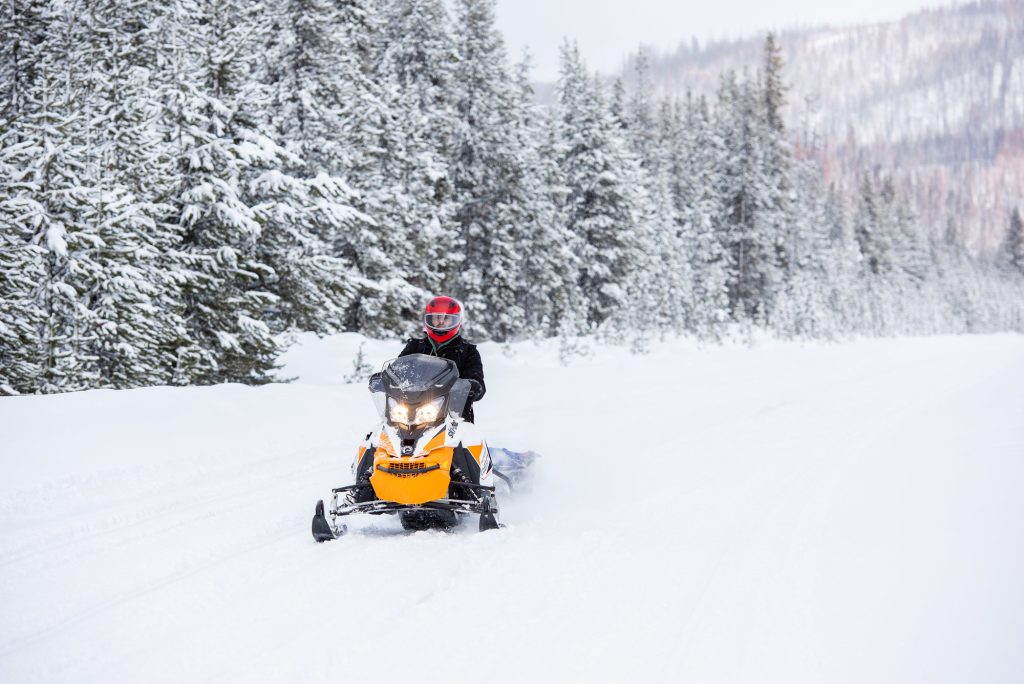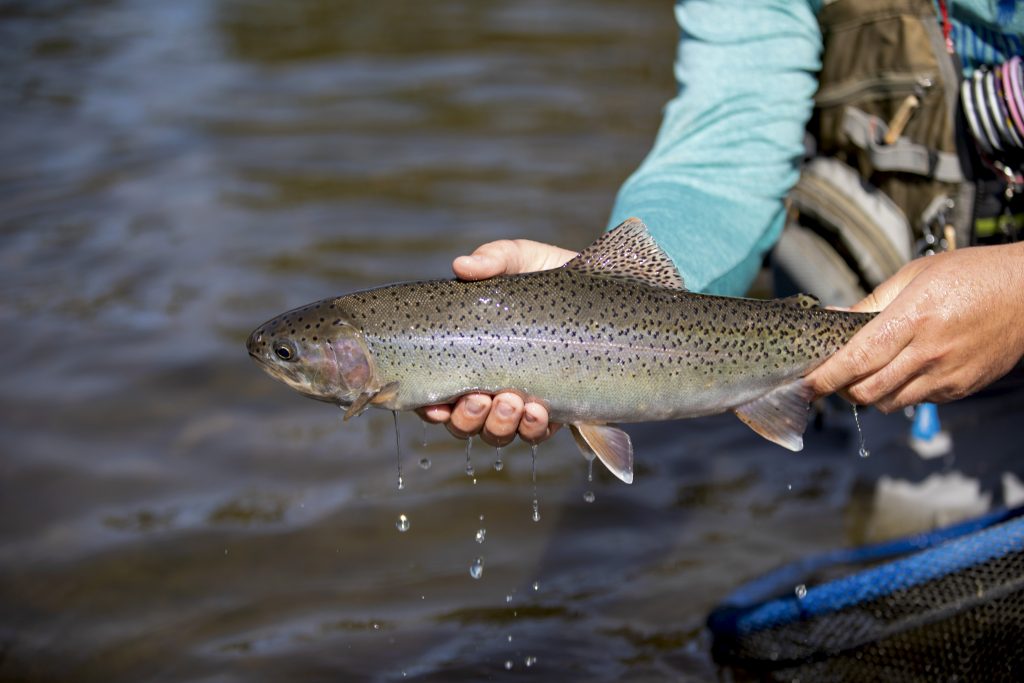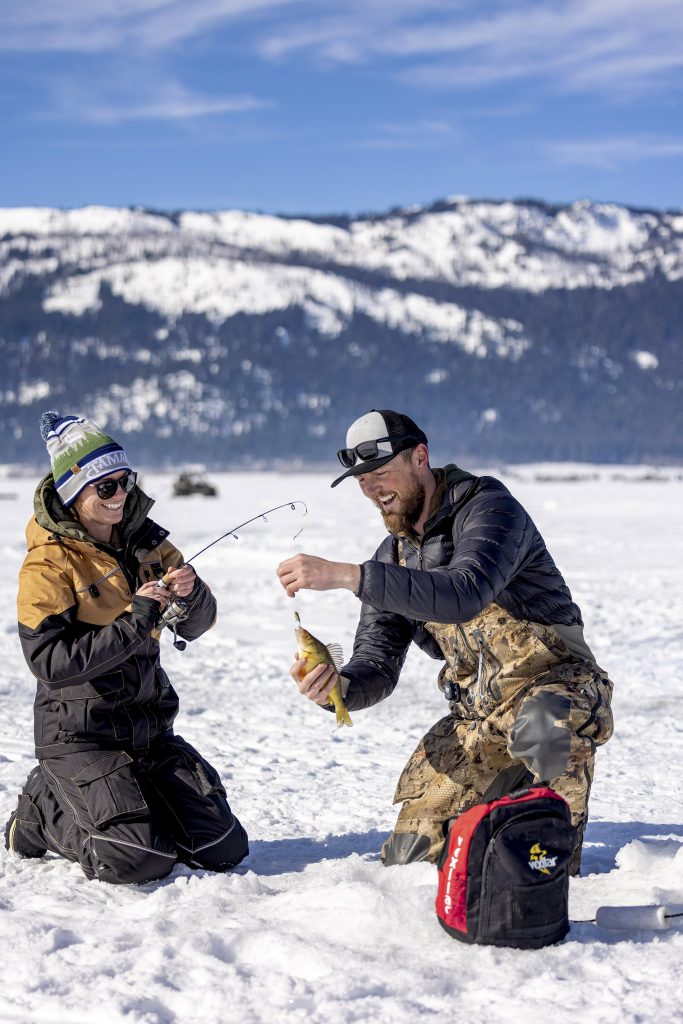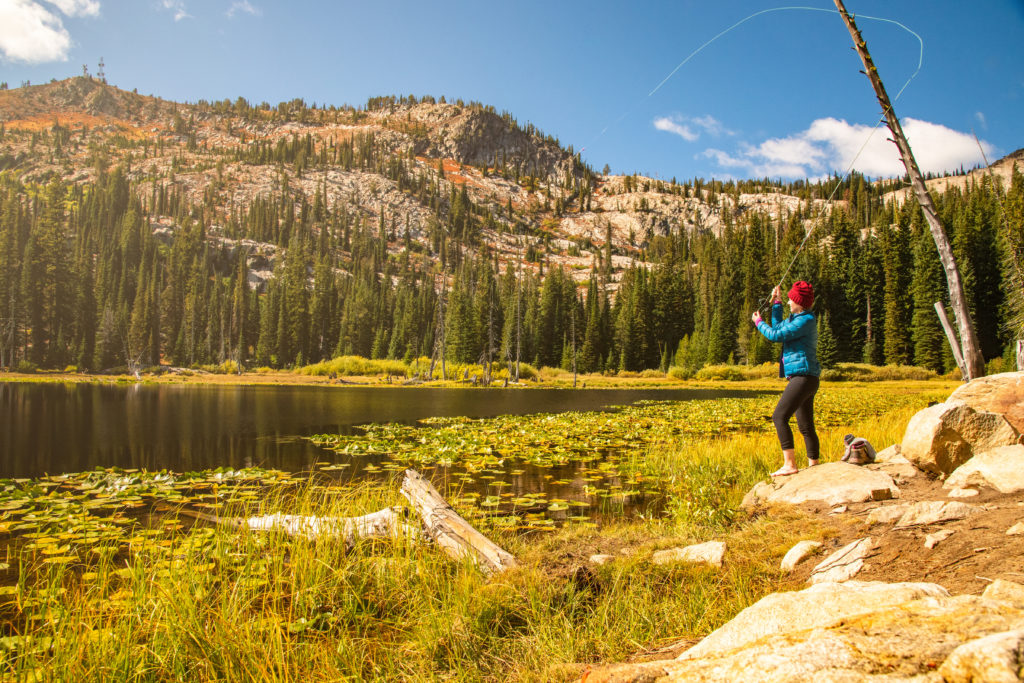Feeding the Future: The McCall Hatchery Works Year Round to Save Chinook Salmon
By April Thomas Whitney
Tucked away in McCall, Idaho, near the shimmering waters of Payette Lake, the McCall Fish Hatchery plays a critical role in protecting Idaho’s Chinook salmon. Built in 1979 as part of the Lower Snake River Compensation Plan, the hatchery helps offset the loss of migrating fish caused by the four dams on the Lower Snake River. But the hatchery’s mission goes beyond boosting salmon populations – it also offers a unique opportunity for visitors to learn about the life cycle of these remarkable fish and the work the hatchery is doing to help them survive.

The Mission: Restoring Idaho’s Chinook Salmon Population
The McCall Fish Hatchery was created to help recover the declining population of summer Chinook salmon. These fish have faced steep challenges over the years, and the hatchery’s goal is to ensure their survival. The Idaho Department of Fish and Game (IDFG) operates the facility, focusing on rearing Chinook salmon and preparing them for their journey back to the wild. Jamie Mitchell has managed the McCall Hatchery for the past 10 years.
“Our mission is to enhance the population of summer Chinook salmon and ensure these fish continue to thrive in Idaho’s rivers,” says Mitchell. “By carefully monitoring the fish and using data-driven practices, we can boost salmon numbers while preserving the genetic diversity that’s essential for long-term survival.”
Each spring, about one million smolts are released from the McCall Hatchery into the South Fork of the Salmon River (near Warm Lake), where they begin a 775-mile journey to the Pacific Ocean. After several years, they return to their birthplace to spawn, completing a remarkable cycle.
Unfortunately, the chinook salmon face numerous challenges on their epic journey to the Pacific and back, including dams, limited food supply and predators, including hungry sea lions and seals that can venture up the Columbia River to feast on the salmon before they reach the ocean.
The Hatchery Detour
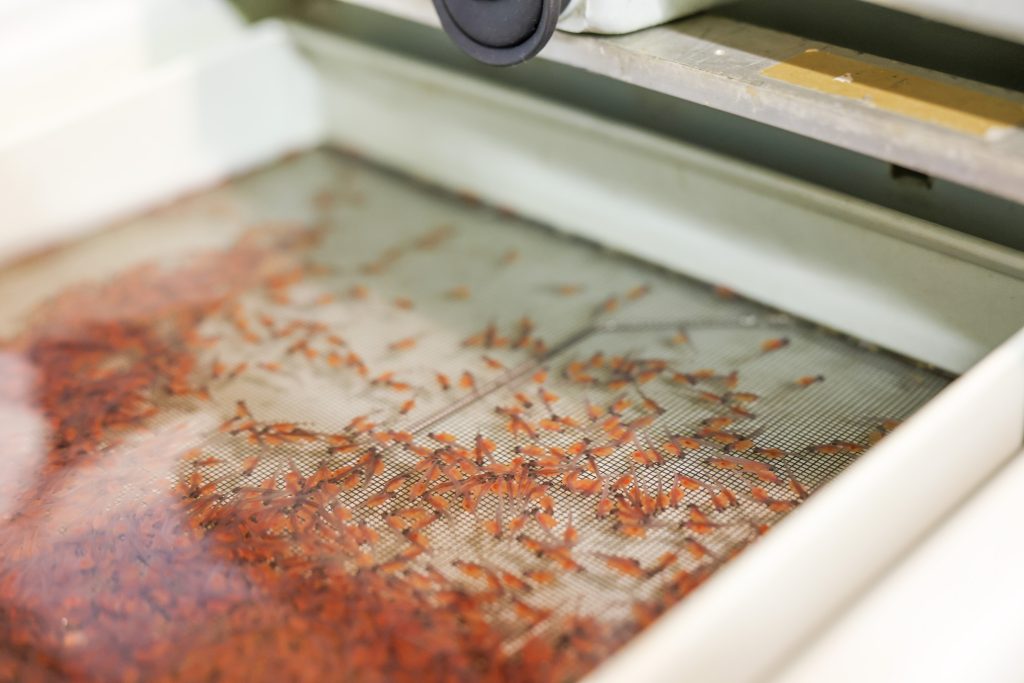
“It all starts over at the South Fork Salmon River, where these fish originate from,” said Mitchell. “When the adult fish come back to their native spawning grounds after 2-3 years in the ocean, we collect all the adult salmon in a fish trap. At that point, we sort the natural fish from the hatchery fish. We send the natural fish upstream from the weir to spawn naturally on their own in the Upper South Fork.”
The technicians collect the number of hatchery origin fish needed for the hatchery program and truck them back to McCall, where they live at the hatchery until the end of the summer. That’s when they are spawned, meaning their eggs are collected and fertilized at the hatchery.
After those fertilized eggs hatch, the baby fish will spend about 18 months at the hatchery before heading back to the wild as smolts.
The eggs incubate for one to two months before hatching, then remain in incubators for two to six months after that. After incubation, the hatchlings are transferred to 14 indoor vats, where they are fed and continue developing. They remain in those vats for about six months until the following June or July, when the marking process begins.
This is why the summer months are the best time to visit the hatchery. During late June & early July there’s a good chance you can see the marking process in action (call ahead for best viewing times). During this important step, three-inch smolt have their adipose fins clipped so anglers and biologists can identify them in the wild. A tiny metal implant – about the size of a pinhead – is inserted into the nose of some of the fish. Those tags have microscopic numbers that are read and logged at the end of the spawning process.
“There’s a lot of tracking that goes on and data that’s collected.”

After marking, the pre-smolts are sent to the outdoor rearing ponds to gain size and strength.
“June through end of September is our warmest water temperature. So that’s our opportunity to get the most growth on these fish. So we’re just feeding them as much as we can to get them fat for winter. We try and keep the water about 52 to 55 degrees, and that’s about ideal for getting good growth on Chinook through the end of September,” says Mitchell.
All the water used at the hatchery comes from Payette Lake. During the fall and winter months, water temperatures drop and the cold-blooded fish don’t require as many calories.
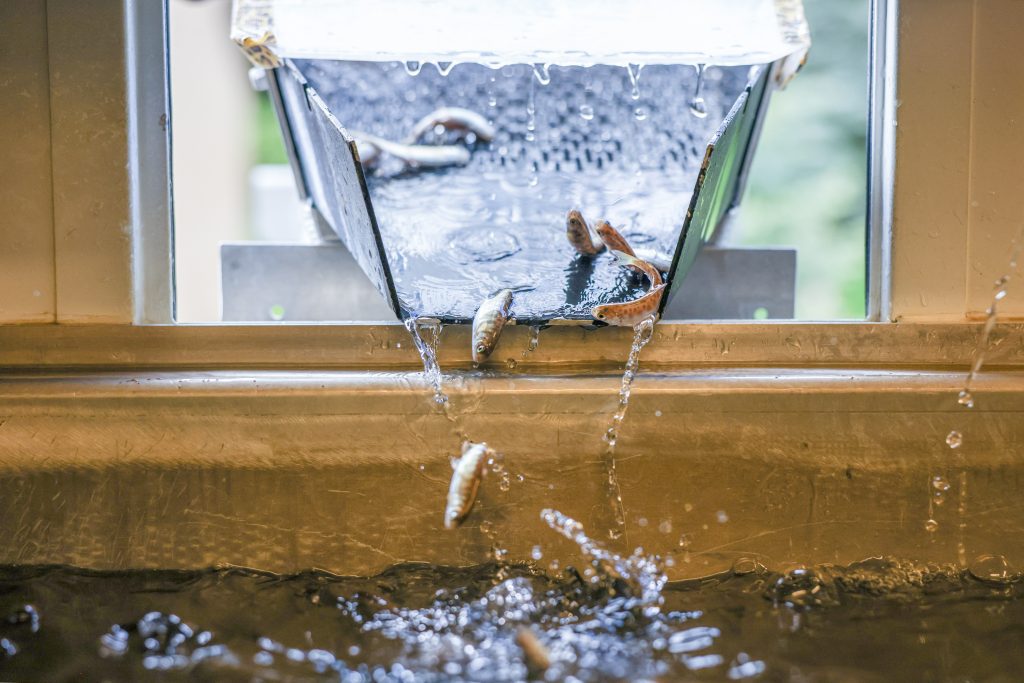
Ready for Release
By mid-April, the smolts are ready for release. Hatchery teams set up a fish pump to pump them from the hatchery ponds into transport trucks. The trucks transport as many as 40 loads of fish to the South fork over the course of 3-4 days. The goal is to get them all released before high water, so the current can flush them down to the Lower Granite dam, about 250 river miles away.
It takes a year and a half for an egg to develop and grow into a five and a half inch smolt. “We try and keep them as happy and healthy as possible for 18 months,” says Mitchell. “Get them set up for success. Get them out to the ocean, and hopefully the ocean conditions are right, and they get big and strong in the ocean and survive the 775-mile trip back up here so people can catch them four years later.
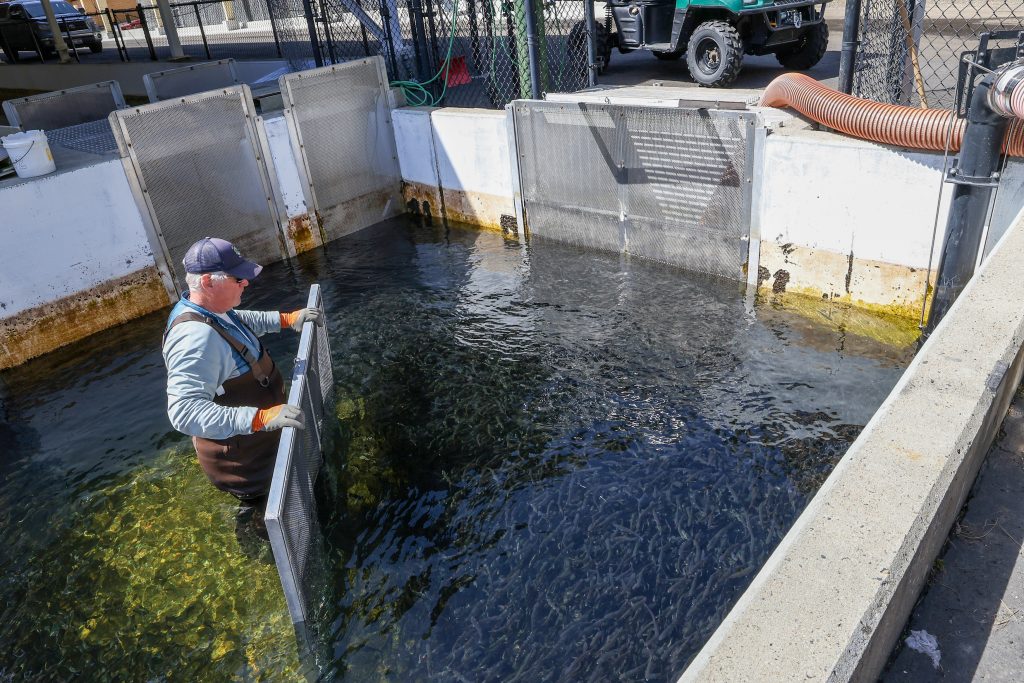
Too Many or Not Enough
Any extra fish above the number needed for the hatchery program are marked and returned to the river for anglers to catch during the designated South Fork fishing season.
If the extra hatchery fish keep cycling back up to the South Fork Fish trap without getting caught, the hatchery will collect those fish and either give them to one of the Native American tribes they work with, (the Nez Perce tribe and Shoshone Bannock tribes) or to a local food bank.
If there are not enough salmon returning during a particular spawning season, Fish and Game may reduce the length or cancel the season for anglers.
“In 2018, we were short on returning adults, so we ended up short 100,000 fish for our release, about 10% down,” says Mitchell. Scenarios like these illustrate the importance of the hatchery’s impact.
“The main advantage is that there are no predators in the hatchery. The other big advantage is the egg development. We see 80% survival on our eggs from when we spawn them to release. In the wild, you would see less than 5% coming out of the gravel. The hatchery program puts an extra million young fish into the system every year to boost the number of fish that are given a chance to complete the whole cycle.”
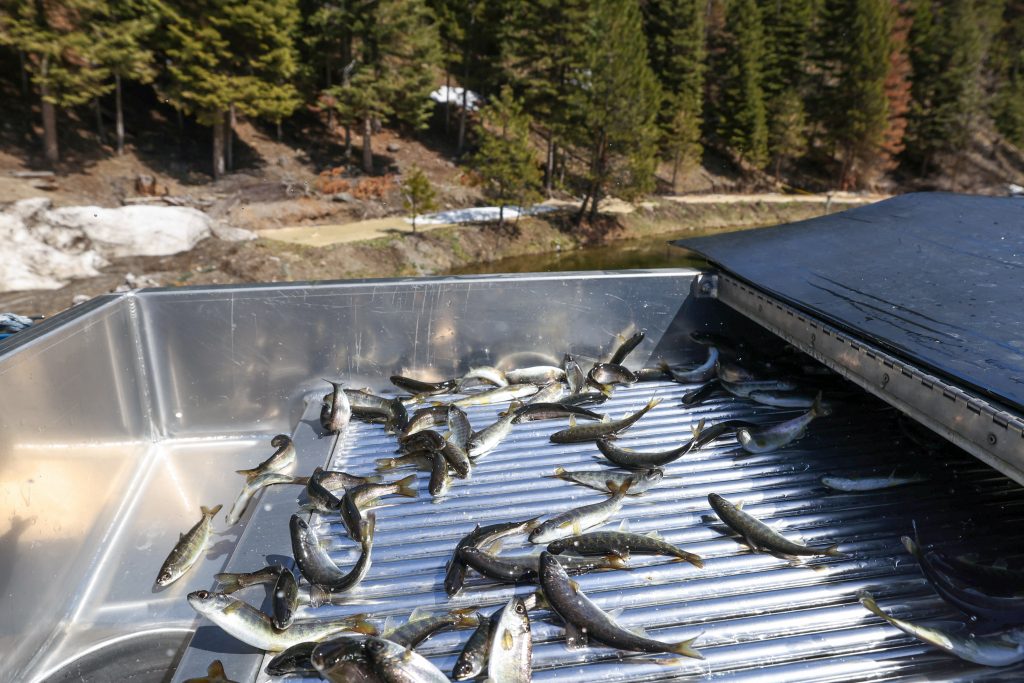
Why Visiting the Hatchery is Worth It
A visit to the McCall Fish Hatchery has a lot to offer. For families, it’s a chance to introduce children to the importance of conservation and the wonders of wildlife. For anglers, it’s an opportunity to gain a deeper appreciation for the work that goes into maintaining healthy fish populations. And for anyone exploring McCall, it’s a chance to witness a critical part of Idaho’s natural heritage.
“We enjoy sharing the story of Idaho’s salmon with visitors,” says Mitchell. “These fish face countless challenges in their journey, and by giving people an inside look at what it takes to protect them, we hope to inspire a stronger sense of stewardship for our natural resources. We also hope to help people understand why and how much effort is being made to ensure that salmon keep coming back to the South Fork every year and that a lot of that is happening right here in McCall.”
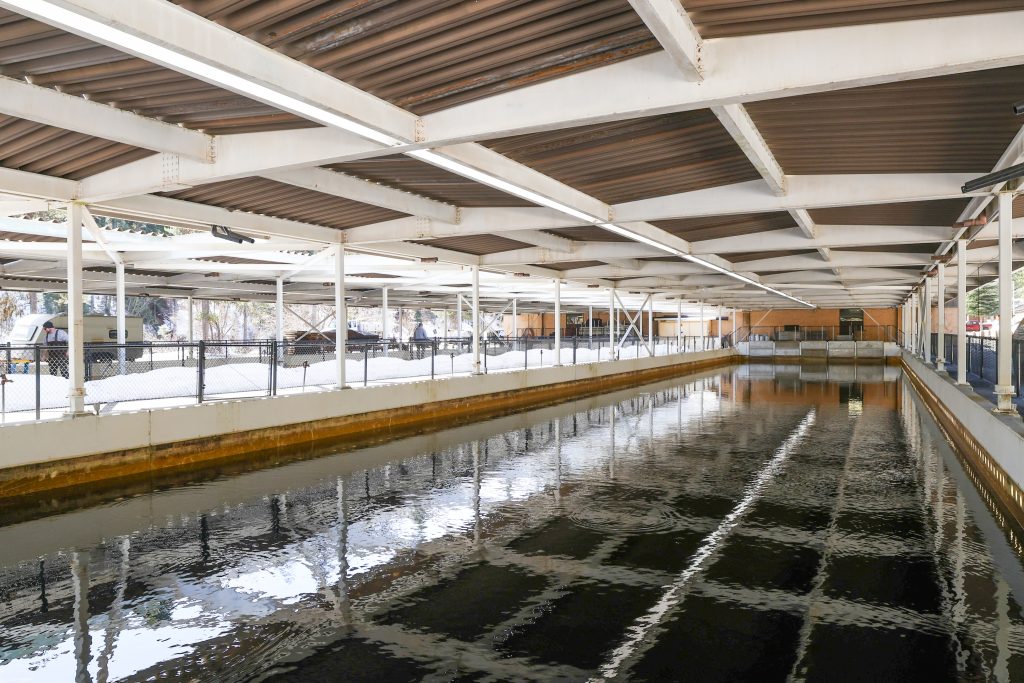
When to Visit
The McCall Fish Hatchery welcomes visitors year-round, but the best time to visit is between Memorial Day and Labor Day when hatchery operations are in full swing.
Tour Options:
- Self-Guided Hatchery Tours: Visitors can explore the facility at their own pace during business hours, 9:00 am to 4:00 pm daily. Informational signage and exhibits provide helpful context about the hatchery’s work. Exhibits and signage are set to be upgraded throughout the summer of 2025.
- Guided Hatchery Tours: For a more in-depth experience, guided tours are available. Led by knowledgeable hatchery staff, these tours offer a deeper level of detail and the chance to ask questions. It’s best to call a week in advance to confirm availability.
Tour Highlights:
- Rearing Tanks: Walk by the outdoor raceways where young salmon grow. Learn how hatchery staff feed and care for the fish daily. Visitors can watch the fish as they transition from fry to smolts and learn about the different stages of development. Best time to see this: Memorial Day through Labor Day.
- Marking Process: Watch as hatchery workers remove the adipose fins from the small fish and insert a coded wire tag in their noses. This happens in a special marking trailer. Best time to see: Late June & Early July.
- Egg Incubation Room: See where thousands of salmon eggs are nurtured under carefully controlled conditions. Hatchery staff monitor the temperature, oxygen levels, and water quality to ensure the best possible survival rates. Best time to see: October (call ahead).
To Schedule a Tour:
Call the hatchery at (208) 634-2690 to inquire about tour times and group reservations.
Walk-ins are welcome, but calling ahead is recommended, especially for large groups.


